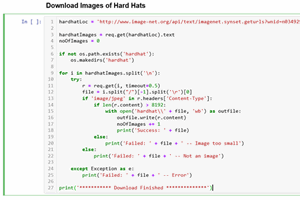


ItemsRepeaterĪ very basic control that does not provide virtualization on its own: "ItemsRepeater supports virtualization when attached to a host that supports virtualization." DataGridĪ rather heavy control from WCT that seems to be the only one to dynamically resize cells depending on their content. However, I found a solution from 2013 that is based on pre-calculating the content size for invisible elements. This is the only list/grid control that officially declares the support of variable-sized items, but at the same time, it does not support virtualization. ItemsStackPanelĪ virtualization-supporting version of StackPanel, but, as far as I understand, panels are supposed to be used for simple layouting of child items and not for presenting long lists based on a data source. Also, its dragging uses the whole item area while I need to make it available only with a :: handle on the side. It seems to be the go-to control for the lists with drag'n'drop, but it can't resize the items dynamically.
#PDF2CSV OPEN SOURCE PYTHON WINDOWS#
I have reviewed the following controls in WinUI 2.x and Windows Community Toolkit, but it looks like each of them lacks one or more of the required capabilities. Automatically adjusts row heights based on their content growing or shrinking in height (due to the user's input or because the app's window resized horizontally and wrapped some content).įeatures I do not need: headers, columns, sorting, filtering.Allows to reorder rows by dragging and dropping them (single or multiple)."virtualization" in the XAML terminology). Recycles the row views that are not visible (i.e.

So I've been looking for some list/stack control that: These rows can be rearranged with a :: handle on the side: Instead of using a "single-field" editor (like MS Word has), these apps show a vertical stack of content rows (so-called "blocks") that can contain text, media, link previews, LaTeX, etc. Fonts can be downloaded from Google Fonts.I am trying to implement a document editor similar to Notion or Craft but in a WinUI/UWP application.
#PDF2CSV OPEN SOURCE PYTHON PDF#
Installation pip install csv2pdf Examples 📋 # Quick conversion > from csv2pdf import convert > convert ( "source.csv", "destination.pdf" ) # Change Orientation of the PDF File > from csv2pdf import convert > convert ( "source.csv", "destination.pdf", orientation = "L" ) # Specify Delimiter for the CSV File > from csv2pdf import convert > convert ( "source.csv", "destination.pdf", delimiter = "&" ) # Change Alignment of the cells > from csv2pdf import convert > convert ( "source.csv", "destination.pdf", align = "L" ) > from csv2pdf import convert > convert ( "source.csv", "destination.pdf", align = "R" ) # Change Size & Header-Size > from csv2pdf import convert > convert ( "source.csv", "destination.pdf", size = 5 ) > from csv2pdf import convert > convert ( "source.csv", "destination.pdf", headersize = 7 ) # Using custom fonts > from csv2pdf import convert > convert ( "source.csv", "destination.pdf", font = r "Fonts\custom-font.tff", headerfont = r "Fonts\custom-header-font.tff" ) pdf ) A Python module that allows you to convert CSV FILES to PDF FILES easily!


 0 kommentar(er)
0 kommentar(er)
